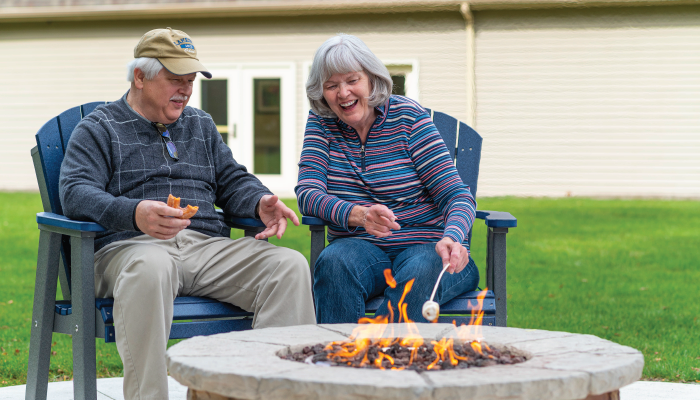Do People Enter Continuing Care Too Young
Why the Best Age to Move to a CCRC is Younger Than You Think
Posted on: January 12, 2022

Did you know the average age of a senior living resident is often 79-80 years old? Many people move to a retirement community when they begin to need help with some of the activities of daily life, or with taking care of their home. However, a growing number of people are choosing to move to a continuing care retirement community sooner - anytime after age 55, in fact. That's because they're ready to stop worrying about things like chores and home maintenance and want to spend more time doing the things they love while they're active and healthy. Myths about continuing care retirement communities abound. Have you heard any of these? Below, we'll break down these myths and explain why moving to a CCRC earlier in life has plenty of perks! Most CCRCs have a minimum age of 55. If you're lucky enough to retire at age 55, wouldn't you rather spend your retirement years spending more time doing the things you enjoy and less time doing chores? Here are a few examples of the ways a CCRC can help you save time: Moving into a CCRC when you're younger also means you already have a plan in place for your future care. You'll be able to receive assisted living, skilled nursing, rehab and therapy, and memory care all on campus and with a guaranteed spot. Actually, moving to a CCRC is one of the best ways for older adults to meet like-minded friends and neighbors. Consider a typical day in your life now. You may see your spouse throughout the day, or get lunch with friends. But you likely spend most of your time at home. To make or meet friends, you have to make a concentrated effort. Now think about a CCRC. Opportunities to meet new people are sprinkled throughout the day - from running into your neighbors on a morning walk, to meeting new faces at the on-campus dining room, to rekindling your hobbies at a club or committee meeting. As for being bored, the list of amenities mentioned above is just a taste of what's available at Otterbein. Plus, if you're feeling adventurous, you can always head off campus to local attractions. Whatever you enjoy doing, you'll find a way to do it here. Moving to a CCRC can mean downsizing. However, how much you downsize is up to you. For example, at Otterbein Marblehead, you can choose from a variety of one- and two-bedroom patio home floor plans to suit your needs. Don't need as much space? Our apartments are cozy yet practical. Every home offers plenty of closet and storage space, and our patio homes include garages. Remember, downsizing is an opportunity to make sure you're keeping what really matters to you. It can be liberating to free yourself from clutter! And if the process sounds overwhelming, we're happy to help you get started. Before you make any decisions about finances or determining which communities are in your budget, it's important to add up what you're already spending to live at home (it's not necessarily free!). Consider the following expenses and the amount you usually pay each month: Nearly all of these expenses would be included in a monthly fee at a CCRC. The most common ways to pay for senior living expenses include any regular monthly income, Social Security, your total assets (including the sale of your home), savings, pensions, investments, long-term care insurance, and veterans benefits. Otterbein Marblehead is located on the shores of Lake Erie, just minutes from popular area attractions including: At Otterbein SeniorLife Marblehead, we have various contract options, price points, and home options to fit your needs and lifestyle. Contact us today to learn more and see our community for yourself! 4 Reasons to Move to a Senior Living Community Sooner
1. I'm Not Old Enough for a CCRC
2. I'll Lose My Social Life and Be Bored if I Move In
3. I Won't Have Enough Room for My Things
4. A Retirement Community is Too Expensive
Learn More about Otterbein SeniorLife Marblehead

Source: https://blog.otterbein.org/why-the-best-age-to-move-to-a-ccrc-is-younger-than-you-think
0 Response to "Do People Enter Continuing Care Too Young"
Publicar un comentario